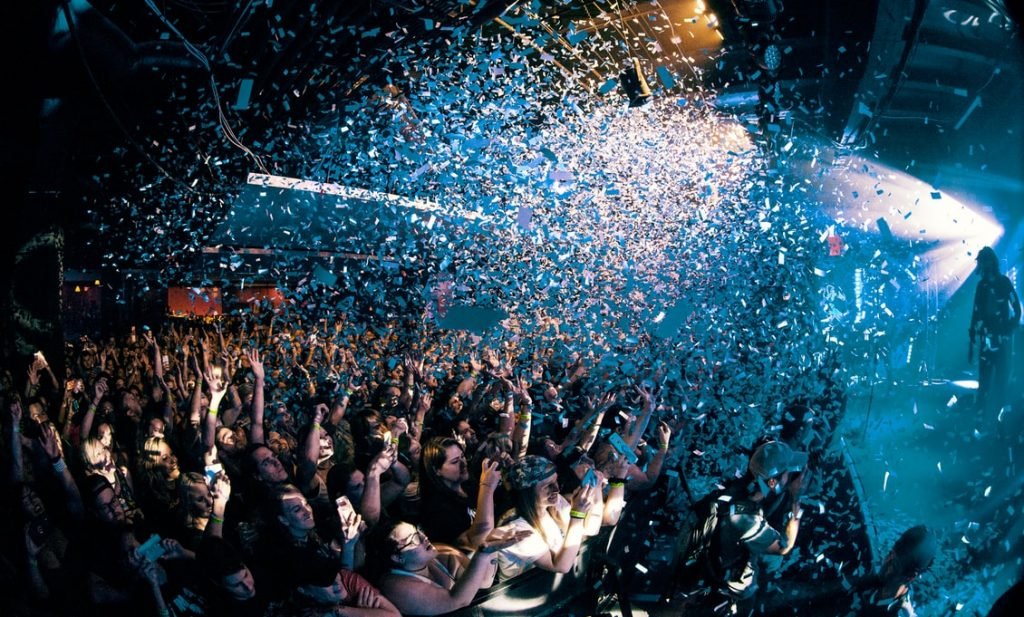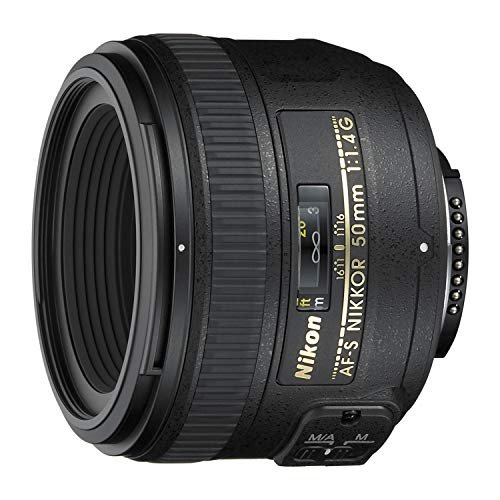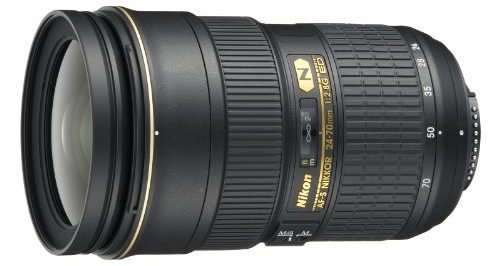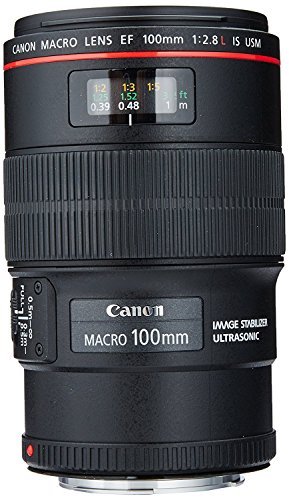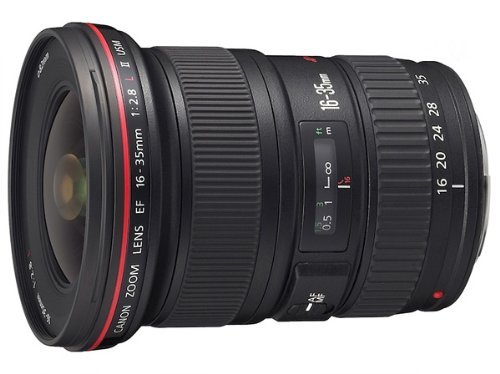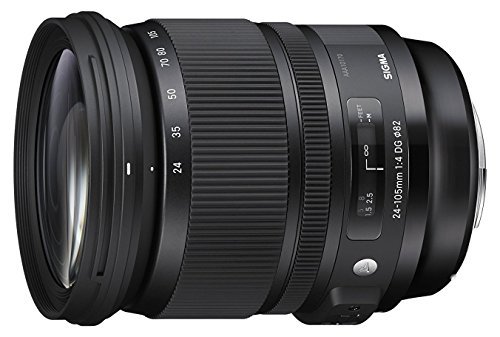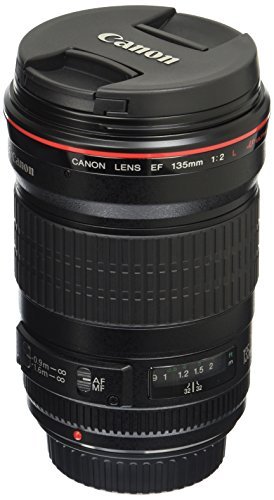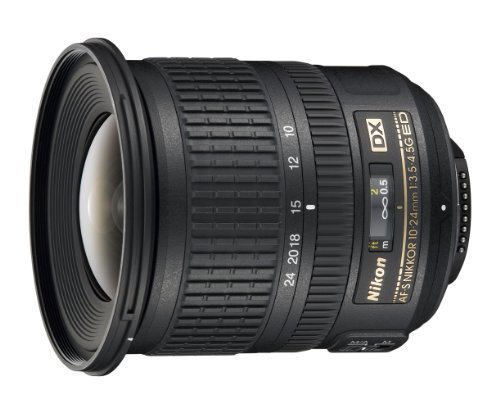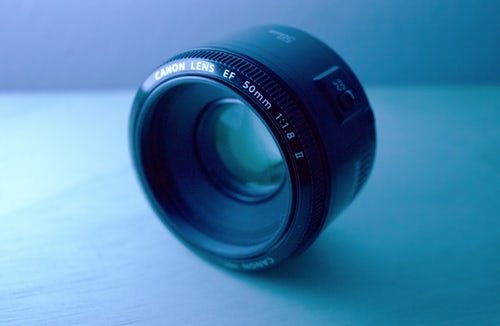In this article, we have reviewed the 10 of the best lens for event photography in the market from Nikon, Canon & Sigma along with a comparison table and a detailed buyer’s guide to help you choose the best lens possible for your needs.
Have you ever wanted to see behind the scenes of amazing events and activities around you?
To meet exciting and influential people?
To capture the extraordinary special moments with your own hands?
If so, event photography may be the right choice for you. Event Photography can be one of the most profitable businesses a professional photographer can have. With so many concerts, weddings, corporate parties, charity events, business conferences, cooperation parties, and different types of events happening throughout the whole year, there’s plenty of work available for you.
Being an event photographer means consistently producing the best photographs possible. People have a lot of expectations with an event photographer, and it is your job to live up to those expectations. It is an undeniable fact that you will need professional camera skills, artistic eyes, and a good set of equipment to give your best shots in event photography.
A camera lens is known to be an essential part of a camera. Many photographers tend to ignore upgrading the lenses of their cameras. A camera lens is vital in your photography gear that is used for capturing detailed and sharp photos.
There is a fact: A right lens fitted in a basic camera body can take excellent pictures; however you can not expect the same from a poor lens fitted in the best camera body in the world. There are dozens of camera lenses available on the market. However, you must know which camera lens suits your needs and fits your budget.
If you are into event photography and looking for a great lens to suit your artistic and practical needs, then the guide below will help you. We have listed the top 10 best lenses for event photography.
10 Best Lens for Event Photography in 2023:
1. Nikon AF-S FX NIKKOR 50mm f/1.4G Lens
Prime lenses are known to increase color accuracy and the intense depth of field control of pictures. Primer lenses offer uniformity in style. Prime lenses are sharper than zoom lenses. It is one of the reasons why an event photographer uses the same prime lens for all the event portrait shots.
The Nikon AF-S Nikkor is one of the latest additions to the prime lens range of Nikon lenses. If you own a Nikon DSLR camera, then you will be amused at the fantastic performance of this lens. The lens gives excellent shots. The manual focus of the camera is exceptionally smooth.
It provides an intense depth of field and sharper images. The filter attachment of Nikon’s lens measures 58mm. This lens will take your photography to the next level. Let’s check the pros and cons of the camera lens:
- A fast f/1.4 prime lens that is perfect for low light conditions and indoor event photography.
- Nikon Silent Wave Motor lets you click fast, accurate, and noise-free autofocus shots.
- It has a length of 54 mm, and it weighs about 290g. The lens comes with a two-year warranty.
- The super-integrated coating of Nikon improves the light transmission efficiency and superior color consistency.
- The lens does not work on the old manual focus camera.
- The autofocus in Nikkor 50mm f/1.4G is slower than its predecessor i.e. the Nikon 50mm f/1.4D.
2. Nikon AF-S FX NIKKOR 85mm f/1.4G Lens
Fast lenses are known to have a wide aperture that allows more light to enter in less time. You can give a sharp focus to your subject with the help of the Nikon AF-s FX Nikkor 85mm f/1.4G lens.
The photography lens is ideal for event photography conditions like dimly lit wedding receptions, restaurants, and nightclubs. The lens can shoot a candid shot in all these conditions without blur.
Nikon AF-s FX Nikkor 85mm is a professional telephoto lens with a fast f/1.4 aperture. It is an incarnation of a legendary NIKKOR, and it is redesigned for outstanding performance. The lens is specially designed for portraits, studios, and event photographers that need high-quality and ultra-fast lenses with a larger aperture of 1.4 for indoor low-light event photography.
It also isolates subjects from the background without compromising the sharpness and image quality. It is undoubtedly one of the best lenses for event photography. Here are the pros and cons of this lens:
- The 9-blade diaphragm produces soft and pleasing blur characteristics in photos.
- The silent wave motor(SVM) of this lens lets you click accurately, fast, and noise-free autofocus.
- It uses a super-integrated coating and nanocrystal coat for optimum image clarity.
- It also has a M/A mode which can be used to switch fast between manual and autofocus modes.
- It has an exceptional low-light capability that can be used in indoor event photography.
- The lens does not work on manual-focus 35mm cameras.
- The lens is costly. You should only buy it if it is under the budget.
3. Nikon 70-200mm f/2.8G Lens
The 70-200mm lens is an ideal lens for wedding event photography. It allows you to capture candids, from the tears at the reception as well as the laughs at reception.
The lens creates a beautiful blur at f/2.9 aperture, and the compression you get from zooming in from 150-200mm gives you an excellent image that is hard to achieve from any other lens. You can also get close to the action at the event without interrupting it.
The Nikon 70-200mm lens has been the benchmark for fast telephoto zoom lenses, ideal for events like sports, low light, wildlife, concerts, and wedding photography. This new lens has taken the legendary performance to the next level with ultimate image quality.
If you are capturing a fashion event or a sports event in a stadium or a wedding party, you need to know how far you will shoot from the main event. This lens will take care of this specific problem. No matter which DSLR body you are using, the lens will take your image quality to new heights.
Here are the pros and cons of this lens:
- The Nikkor 70-200mm lens produces images that have a life of their own. The f/2.8 aperture creates a beautiful and astonishing background blur.
- The lens opens new possibilities for capturing indoor events, outdoor events at dawn, and wedding receptions.
- The lens has a fluorine coat on the external front lens element. It protects the lens from water droplets, dust, and grease.
- Camera movements during exposures steal the sharpness of the photo. VR image stabilization offered by the lens enhances the stops to ~4.0 stops. It is a must-have feature when you are capturing event photos handheld or on a monopod. It is also useful in tripods
- You can get a third-party 70-200mm lens with lesser weight and less price.
- Many people reported lens autofocus problems. It is yet to be solved by Nikon.
4. Nikon AF-S FX NIKKOR 24-70mm f/2.8G ED Zoom Lens
If you can take only one lens with you, then the Nikon 24-70mm lens is a way to go. The versatility of the 24-70mm zoom lens is vital for smaller space events — for example, a small wedding ceremony held in the living room.
Big lenses like 70-200mm will be too compressed for situations like this. The lens will allow enough versatility as it has enough room for movement.
The AF-S Nikkor lens can be used for many different kinds of photography needs – whether it be a wide-angle landscape shot or portraits or events photography. With the constant aperture of f/ 2.8, the lens is ideal for professional event photographers, who work in various situations and need excellent sharpness, color, and contrast in their photographs.
The lens is quite heavy, it weighs around 900 grams, and it is heavier than many Nikon DSLR cameras. Here are the pros and cons of this lens:
- Nikon Silent Wave Motor (SWM) gives you powerful, exceptional accuracy, and quiet operation with autofocus.
- M/A Focus mode enables the user to quickly switch between manual and autofocus operations.
- It can focus on up to 14.9 inches.
- The lens has a super integrated coating and nanocrystal coat for optimum image clarity.
- Internal Focus (IF) lets you click with fast and quiet autofocus without changing the length of the lens.
- You can see lens shadow cast by a pop-up flashgun at wide-angle frames.
- You can still get better picture quality with a prime lens.
5. Canon EF 100mm f/2.8L IS USM Macro Lens
Canon EF 100mm macro lens is a must-have lens if you are a pro event photographer. If you are shooting at a wedding event, then you do know that the bride and groom spend thousands of dollars on the details of a wedding. They are sure to appreciate you if you capture the wedding event in detail.
With a 100mm macro lens, you can obtain detailed shots with the same quality and details as product advertisements in magazines. The lens can be used to get a close shot of wedding rings at weddings. The EF 100mm lens has an exact macro magnification ratio of 1:1. It means that the object you are capturing in real life is the same size as your camera sensor.
The versatile lens gives excellent results in portrait photography and handheld videography. The camera can achieve a shallow depth of field with a beautiful background blur effect.
If you are looking for the best lens for event photography, then it is a must-have lens in your bag. The lens combines excellent image quality with a great focal length, lightweight body, and Hybrid Image Stabilization. Here are some pros and cons of this lens:
- The lens offers a full 1:1 macro reproduction with a minimum close focus distance of just 30 centimeters. You can take a photo of the subject that is subjected to 13cm from the front element.
- The internal focus motor (USM) enables the lens to focus quickly, accurately, and quietly.
- You will get to see the astonishing bokeh in your photos.
- The lens has a solid and weather-sealed body.
- At f/2.8, lens contrast and sharpness are amazing. The lens is impressive in the center of the frame at a max aperture that renders a sharp result.
- The lens offers great photos because of the ultra-low dispersion(UD) element.
- You can not depend on a single macro lens for all your event photography. The lens is used for a specific purpose. You need to carry another lens for your event photography.
6. Canon EF 16-35mm f/2.8L ll USM Zoom Lens
The 24-70mm lens is undoubtedly a great lens. However, it isn’t wide enough to capture everything you want. The ultra-wide angle of a 16-35 lens helps you to capture the environment. Venue and landscape shots at an event provide a great addition to your coverage. With a 16-35mm lens, you can take full advantage of the scenery of the event.
The EF 16-35mm f/2.8 II USM lens is a high-performance, water-repellant, and ultra wide-angle Canon L series lens. It is designed to improve edge-to-edge image quality, which is a requirement of a high-end event photographer.
For a professional L-Series ultra-wide lens, the EF 16-35 isn’t too large and bulky considering the versatility of the lens. It weighs around 790g and has a length of 13cm. The build quality of the camera is terrific.
The lens feels solid in hand, considering the fact it is mostly made of plastic. It also features resistance to shock, vibration, and weather-proofing. The angle of view is 108 degrees at 16mm focal length and 63 degrees at 35mm focal length. Let’s look at the pros and cons of this lens:
- The circular aperture of the lens produces a beautiful background blur when shooting wide-angle shots.
- The lens features three high-precision lens elements; each lens is of a different type: ground, GMO, and replica for better image quality than the other 16-35mm lenses.
- The lens has a wide focus ring. Hard stops can be found at both ends of the range, which makes it easy to focus on infinity. The 82mm filter thread doesn’t rotate on focus.
- When it comes to auto-focusing, the lens is a quick performer. It takes about 0.10 seconds to lock onto the subject with the lens.
- The internal focus motor (USM) enables the lens to focus quickly, accurately, and quietly.
- Internal Focus (IF) lets you click with fast and quiet autofocus without changing the length of the lens.
- The lens is quite expensive. You can buy a Canon 17-40 f/4L lens at half the cost of this lens.
- It does not have image stabilization. You can get that feature through the lens of other brands.
7. Sigma 150-600mm 5-6.3 Contemporary DG OS HSM Lens (Telephoto)
At a press event, if you are in the back seat of a press room, then you can not rely on every lens that you have in your bag. If you are shooting a large event outdoors, then it is not possible to cover a large area of ground with every lens.
So, which specific lens will you need for this kind of event?
The answer is a “600mm” lens.
Sigma 150-600mm contemporary lens falls into the category of the super-telephoto range. It has an aperture of f5-6.3, and the lens can capture sharp and highly detailed photos. The lens offers sharp image quality, super-saturated color rendition, and high-speed autofocus performance.
If you are standing at the back of a chapel during a wedding event then and you want a shot of the groom placing the ring on the bride’s finger, then this lens got it covered for you. The lens finds the focus incredibly fast, even in a low-light environment. The image stabilization of this lens also helps you in capturing photos in low light conditions.
The lens is big; however, it does not weigh much. The image quality of this lens is impressive, and for portraits, the background blur and image compression seem unrivaled. It is the first hyper-telephoto lens from the contemporary line. Let’s look at the pros and cons of this lens:
- This lens has a hypersonic motor that provides fast and quiet autofocus performance.
- The optical stabilizer in the lens helps minimize the camera shake for sharper handheld photos.
- The lens is available in Nikon and Canon mounts.
- The lens is compact and lightweight in construction for high usability.
- The lens has water and oil-repellent coating on the front glass. It makes the maintenance of the lens surface much more manageable.
- It also has dust and splash-proof protection.
- Some newer lens does not work well with teleconverters, and you may experience a massive drop in Autofocus reliability.
8. Sigma 24-105mm F4.0 Art DG OS HSM Lens (Telephoto)
What will you do if you are in a situation where you have to be fast on your feet? If you are in a press event and you have to take a shot of someone walking into someplace, then what will you do? You will need a particular type of lens for this purpose.
The image stabilization of this lens is simply amazing. With the Sigma 23-106 f4.0 lens, you can go from shooting wide images of an event to a portrait of the event in less than five seconds. This is what makes this lens amazing.
The Sigma 24-105mm lens is a wide-angle to medium telephoto zoom lens that has a constant aperture of f/4. The lens is designed for both crop sensors and full-frame DSLR cameras. If you need a light-weighted lens with wide-angle and telephoto capability, then this lens is what you should include in your bag.
The build quality of this lens is far superior to the lenses from other brands of the same range. Let’s look at the pros and cons of this lens:
- The lens integrates three aspherical elements into its construction and two FLD and SLD glass elements to help minimize field curvature, and distortions and minimize aberration through the zoom range.
- The lens gives an astonishing image sharpness while avoiding reduced external brightness.
- The lens is available in Sony, Canon, and Nikon Mounts.
- The super multi-layer coating is applied to the lens elements to reduce lens flare, surface reflection, and ghosting to produce images with color fidelity and higher contrast.
- Hyper Sonic Motor (HSM) delivers high-speed focus quietly, making it a perfect choice for video recording and continuous shooting.
- Sigma provides software called SIGMA optimization pro that can update the lens firmware and adjust parameters such as focus.
- The lens is heavier and costlier than other brands.
- You will experience some distortion throughout the zoom range with this lens.
9. Canon EF 135mm f/2L USM Lens
Do you want to capture perfect candid photos at an event?
Then, the Canon EF 135mm f/2L lens is the right choice for you. The lens is sharp and fast. The build quality of the lens is fantastic, and it is one of the least expensive L lenses offered by Canon. The lens is renowned for its image sharpness.
An f/2.0 aperture is considered extremely wide and fast for this focal length. This lens is the second-longest focal length Canon EF lens currently manufactured with an aperture wider than f/2.8. This is the reason that it is one of the most recommended lenses for indoor event photography.
The lens focuses fast and accurately in low light conditions. If you are capturing photos at an indoor wedding ceremony or other indoor events, then you will not have to worry about your lens losing focus frequently with the Canon EF 135mm lens.
Many photographers shoot portraits and headshots with an 85mm lens. However, with 85mm, you need to get close to your subject to fill the frame. With Canon EF 135 lens, you can still fill the frame with the subject’s head and shoulders without going directly into their face with a big lens and camera.
This can make your subject more comfortable in front of the camera, which will lead to better photographs. The focus of the lens is internal. The 135 f.2 does not extend and the 72mm front element does not rotate while focusing. The 135 L lens can also be used in stage event photography.
Now let’s take a look at the pros and cons of this lens:
- The ring USM (Ultrasonic Motor) quickly and quietly locks focus and allows Full Time Manual focusing. A focus limit switch is also provided.
- Manual focusing is easy on Canon EF 135mm with a smooth and nicely sized focus ring.
- Many photographers claim 135mm f/2 to be the sharpest lens of Canon. It is the perfect lens to get even little details of the event in photographs.
- Combining a 135mm lens with an f/2 aperture will result in a bokeh monster lens. The background blur from this lens is creamy, buttery, soft, and smooth. This lens can easily separate your subject from the background.
- The color given by this lens is accurate, lovely, and saturated. The contrast of the lens is consistent.
- The only drawback of this lens is that it lacks optical stabilization.
10. Nikon 10-24mm f/3.5-4.5G ED-IF AF-S DX NIKKOR Lens
Nikon 10-24mm f/3.5-4G is a compact and lightweight camera that can be used in event photography. It has a wide angle with a 2.4x zoom. The widest end of the zoom range and a focal length of 10mm cover an excellent 109-degree angle of view.
The lens features a focal length range of 10 to 24mm. It is a relatively small lens, compared to other FX lenses. It is easy to carry in any event. The lens is compatible with every Nikon DX camera.
The build quality of the Nikon 10-24mm f/3.5-4G lens is decent. The zoom ring in the lens is wide and has a ridged and rubberized grip band. Zooming in this lens is not internal, which means the lens changes while you zoom in or zoom out.
Physically lens is shortest at 14mm and longest at the 24mm setting. Here are the pros and cons of this lens:
- Nikon Silent Wave Motor (SWM) gives you powerful, exceptional accuracy, and quiet operation with autofocus.
- The lens offers a Field of View range with a large depth of field in short distances that adds a dramatic perspective to your photography.
- The lens has a solid and weather-sealed body.
- Manual focus can be overridden in the Nikon 135 f/2L’s autofocus.
- Internal Focus (IF) lets you click with fast and quiet autofocus without changing the length of the lens.
- The image quality of the lens suffers at the edge of the frames.
- You will see noticeable distortion at 10mm.
So, these are the top 10 best lenses for event photography. You can choose the one that suits your requirement. We have also picked the 2 best lenses among all the lenses listed above at the end of this article. Follow the article ahead to find out.
If you are planning to buy a lens to upgrade your event photography then you must know about some factors to consider before buying any camera lens.
These factors can save you time and money and can serve you as a “buying guide”.
Factors to Consider Before You Buy The Best Lens For Event Photography
Buying a camera lens is undoubtedly an important decision. The decision can affect the quality of your photos. You need to take your time to think about questions like: why do you need this lens? How much do you want to spend? What do you want to achieve with your new lens?
After figuring it out, it is easier to know which type of lens you want to add to your photography kit. Here are some factors to consider before buying a new lens:
Budget
Your budget determines the type of lens you should buy. Everybody can not have the same budget so everybody cannot afford the same lenses. You need to sit down and figure out how much you want to spend on a new lens. Do not just buy anything without having a look at your budget.
You must know that you do not have to spend everything you have just to get a new lens. An expensive lens does not mean that it will magically improve your photography. You should know that high cost doesn’t mean high quality.
With a decent budget, you can get great lenses to step up your photography. You also need to work on your skills rather than spending money on expensive tools.
You should also ask this question before purchasing any new lens: Why do I need it? Always consider future consequences before buying any lens.
Many people buy expensive lenses and then they only use them for a month or two. Do not waste your money on the things you do not need. Always remember “You can get a good lens on a decent budget”. Only buy an expensive lens if you are not tight on budget.
Type of Photography
The article is about event photography and we have recommended a few best lenses for event photography. However, if you are planning to purchase a lens for any other type of photography event then you must research it.
Every camera lens is not made for every type of photography. You must research the type of lens that fits your photography needs. If you are an event photographer then you can choose a lens from the above article.
However, if you want to buy another lens for event photography then research the lens before buying it. It may not meet your event photography requirements.
Zoom or Prime lens?
One of the important decisions to make before buying a lens is choosing from a Zoom or Prime lens. It depends upon the type of photography you are into. If you are a landscape photographer then it is easier to use wide-angle zoom to frame the scene precisely.
Prime lenses will not be able to take many shots that you want in landscape photography. However, Prime and Zoom lenses are used in different conditions of event photography. A prime lens is useful to capture the important detail of an event.
However, a zoom lens can be useful when you can not get near to the subject and you want to capture it. In a wedding event, you can use a telephoto lens to capture the moment from a distance.
The benefits of prime lenses are wider apertures and image quality. Compare any zoom lens with a prime lens and you will notice the difference in image quality. A 50mm prime lens takes better portrait photos than an 18-55mm lens.
Zoom lenses are helpful in taking a shot from a big distance. With a zoom lens, you save time by not having to change the lens for every different shot. Prime lenses are superior in quality and photos. They also perform better in low-light conditions. If you need to allow more light into the lens then you should get a prime lens.
Branded or third party?
You can save money by buying a third-party lens for your camera. You may also get a good bargain while buying a third-party lens. However, this decision may trouble you in the long run. We recommend buying lenses from a recognized brand.
It is always considered best to buy lenses from the camera’s manufacturer. If you have a specific reason to buy from other brands then we recommend sticking to Original Equipment Manufacturer(OEM) lenses. This type of lens holds its value better, has better glass quality, amazing autofocus, and is usually water-resistant.
APS-C or Full-frame?
You can get APS-C and Full Frame lenses at the same price. This makes buying a lens more confusing. If you have an APS-C camera and thinking about buying a full-frame body then you should reconsider your decision.
You may need to consider getting a lens that works on both full-frame and APS-C cameras. This will save you a lot of money. On the other hand, you also get a lens that works on a specific body.
Consider the Size and the Weight
Do not ignore the weight and size of your lenses. Always consider it before making the decision of purchasing a lens. You may need to carry your lens around in an event and buying a heavy lens would not be good for you. It is not easy to handle heavy lenses while capturing photos at different places in an event.
Also, consider the size of the lens before buying it. The smaller lens tends to give more benefits to the photographer. The first is the ease of keeping it in your bag. The second benefit is that you can save money on filters.
Compare the price of a polarizing filter for both lenses. You will find out that you can save hundreds of dollars by buying smaller lenses.
Autofocus, build quality and weatherproofing
Suppose, you end up buying a lens with poor build quality. A little carelessness with the lens can result in a loss of hundreds of dollars. Most of the time people end up buying lenses with poor build quality because of the price.
You should always buy a lens after ensuring the quality of the lens. Most brands have affordable and expensive lenses. Many photographers end up buying cheap lenses and later discover the inferior quality of the lens.
They may have inferior autofocus motors too. The autofocus motors of those cameras are slow and noisier. Some lenses come with high build quality, great autofocus, and weatherproofing feature to protect your lens from bad weather. Research well about a lens before buying it. It will save you a lot of money and trouble down the road.
After considering all these factors, you can buy the best lens for event photography. The guide is also helpful for other types of photography.
Conclusion:
Event photography is a fun and exciting niche. You are most definitely going to enjoy capturing the moments of the event. Regardless of the location or size of the event, your sole job is to capture some great photographs. The equipment or lenses you use will either make or break your event photography.
The first necessary thing before buying any camera lens is to consider some important factors before buying it. The guide we have listed above can be helpful for people who want to buy a lens for their camera.
After reading our “Factors to consider before buying a lens” guide, it is time for you to decide which lens you should buy. You may have already read the lenses we have listed above. All these lenses are great in different conditions of event photography.
If you need our suggestion for buying a new lens for event photography then we advise you to purchase the lens according to your needs. We have clearly stated in all the lenses review which lens suits which type of conditions.
However, if you still need a piece of advice then we can recommend some lenses from the list above. It is our friendly suggestion, although you should purchase the lens according to your requirements. Here are some of the best lenses for event photography:
- Nikon 70-200mm f/2.8G
- Nikon AF-S FX NIKKOR 50mm f/1.4G Lens with Autofocus
- Canon EF 100mm f/2.8L IS USM Macro Lens
You may be wondering why we have listed 2 zoom lenses on our list. The reason is most of the events can not be captured standing in a single place. We have to move from time to time in order to capture the right moments in an event.
However, we cannot always rely on prime lenses in an event. You may have to capture a concert event from a distance with a close shot.
You may have to click photos of the wedding ceremony from a distance. You should not disturb guests while capturing the events. However, nothing can beat the image quality of a prime lens. The portraits captured by a prime lens is simply amazing. You can capture every detail of an event with a prime lens.
Nikon 70-200mm f/2.8g lens and Nikon 24-70mm f/2.9G ED lens can be a part of your photography equipment. Both the zoom lenses are great and offer a lot of excellent features.
You will not be disappointed by purchasing any of these. A prime lens is a must-have lens in your bag. You can purchase Nikon 50mm f/1.4G lens for event photography.
In the end, do not forget to take care of yourself. Event photography is a tiring and demanding job. You will be all day on your feet carrying a camera on your hands. There is no guarantee that the client will provide food or refreshments to you. Pack snacks and water along with your photography equipment.
All the best for your event photography. Hope you rock all the events!
